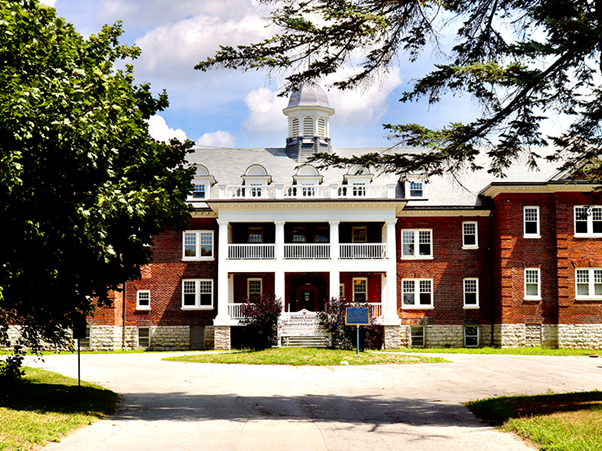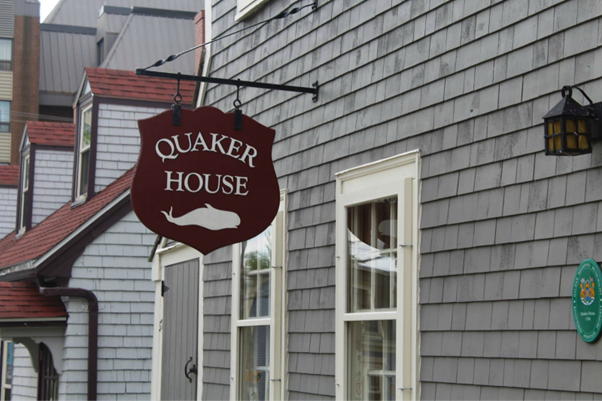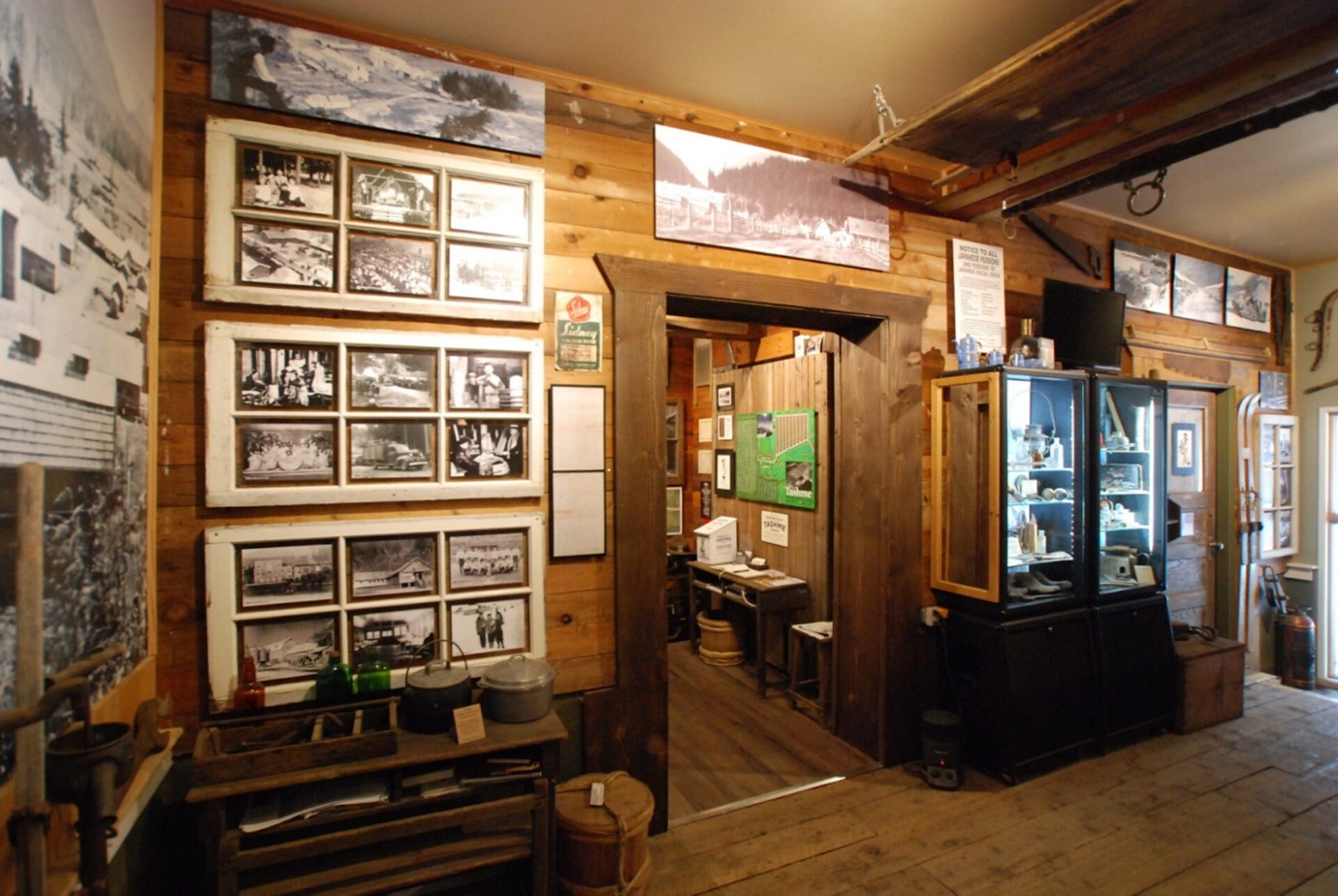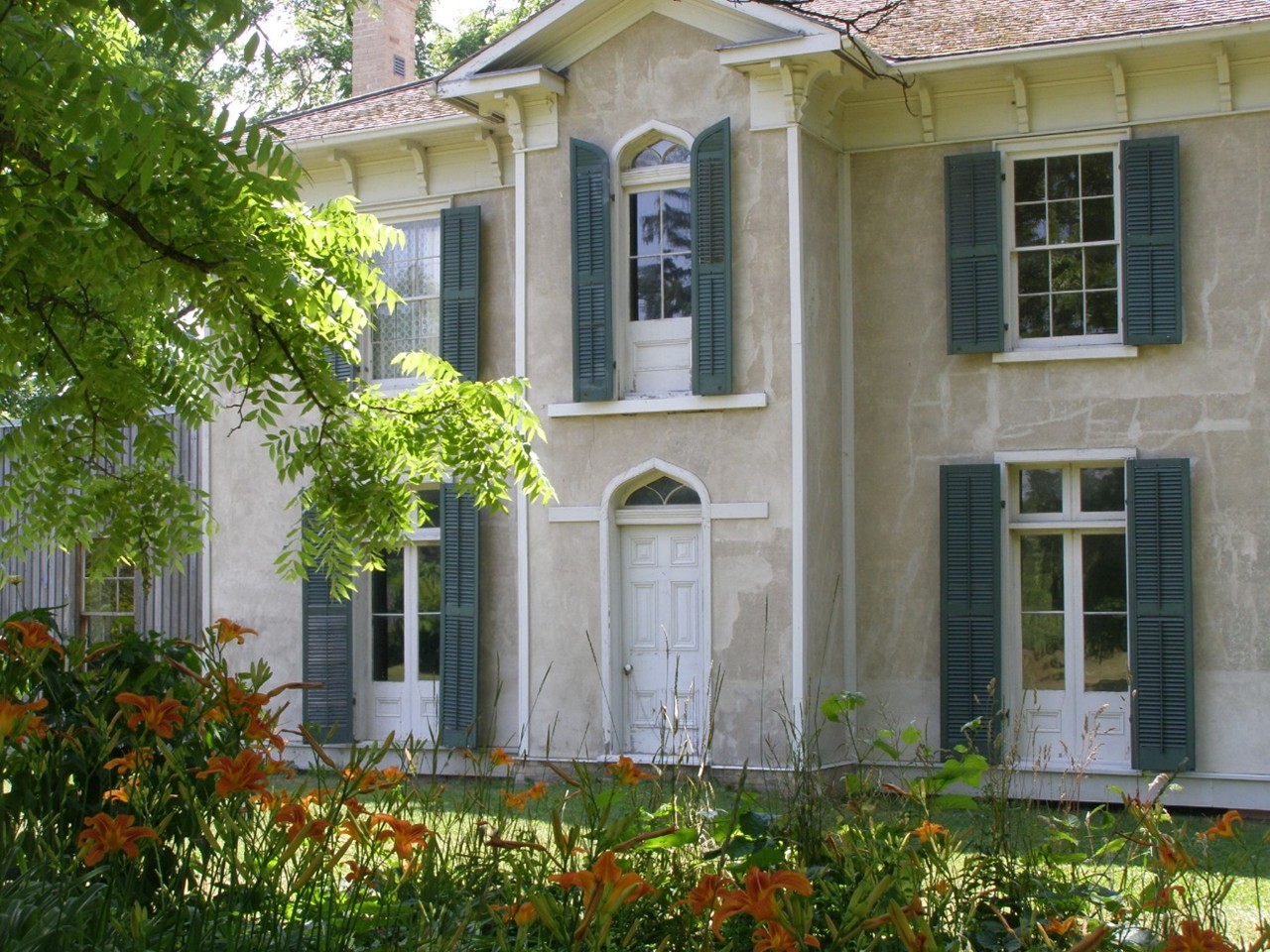Passport Places for Book Lovers – Part Two
Whether you’re a reader or a history-buff, we have prepared a list of even more Passport Places and even more books that we think you will love and learn from. From Indigenous non-fiction, thrilling mysteries by the sea, and moving stories from all sides of history, we’ve got just the book and Passport Place for you.
Missed part one? No worries! You can read all about Passport Places for Book Lovers here.
Woodland Cultural Centre, Brantford, ON

Photo courtesy of Woodland Cultural Centre
In the former Mohawk Institute, a residential school known by students as the “Mush Hole” for the low-quality of food served to pupils, the Woodland Cultural Centre seeks to promote, strengthen and preserve Indigenous history, culture, heritage, art, and storytelling. Since 1972, the former residential school has been reimagined and reclaimed by the First Nations who run the Cultural Centre. They offer programs and workshops from beading to school trips, as well as tours of the former residential school.
The Knowing – Tanya Talaga
A non-fiction book about residential schools in Canada, Tanya Talaga connects historical events like the signing of Treaty 9 and the operations of the Mohawk Institute, along with other residential schools across Canada, to her own familial history as she explores the residential school system and seeks out information about her ancestry.
Black Loyalist Heritage Centre, Shelburne, NS

Photo courtesy of Black Loyalist Heritage Centre
Located in Shelburne, Nova Scotia, the Black Loyalist Centre is dedicated to sharing the history of the region’s Black Loyalist settlers who, following the American Revolutionary War, came to Nova Scotia following promises from the British of freedom and land. When their land grants came late and consisted of less desirable land than those given to White Loyalists, Black Loyalists established the close-knit community of Birchtown.
Washington Black – Esi Edugyan
This novel follows titular character Washington Black as he escapes from slavery and his subsequent adventures and journeys. Washington ends up taking refuge in Shelburne, Nova Scotia during the course of the novel. It is currently being adapted as a mini-series for Hulu.
The Book of Negroes – Lawrence Hill
The novel takes its name from the historical document of the same name. Written by Brigadier General Samuel Birch, the document records the names of 3,000 Black Loyalists who, during the American Revolutionary War, escaped to British lines and later evacuated to Nova Scotia as free people of colour. Many Black Loyalists settled in Shelburne and Birchtown, which was named for Samuel Birch.
Kettle Valley Steam Railway, BC

Photo courtesy of Kettle Valley Steam Railway
Once part of a busy network of railroads, the Kettle Valley Steam Railroad offers visitors train rides in a historic locomotive where they can enjoy sweeping views of the Okanagan Valley. Visitors can also enjoy immersive experiences like The Great Train Robbery – note that this special trip is not included with a National Trust Membership.
The Sleeping Car Porter – Suzette Mayr
This novel, which takes place during a cross-country train journey in 1929, follows Baxter, a Black man working as a sleeping car porter who aspires to be a dentist. The train becomes stranded in the mountains, and Baxter becomes privy to the secrets of passengers that blur with hallucinations brought on by sleep-deprivation. When Baxter finds an illicit postcard of two men, his memories and longings are reawakened.
Quaker House, Dartmouth, NS

Photo courtesy of Quaker House
One of the oldest homes in Dartmouth, the Quaker House represents a short period of time where a community of Quaker Whalers called Dartmouth home. The Dartmouth Whaling industry grew quickly and experienced much success. Eventually, the Quaker Whalers struck a deal to move the industry to Milford Haven in Wales after being in Dartmouth for less than a decade, though some decided to remain in Dartmouth.
Moby Dick – Herman Melville
Seth Coleman remained in Dartmouth after many Quakers left. His grandson, a master whaler in Nantucket, signed on a new crew member under the name of Herman Melville, who would later go on to write Moby Dick. This classic novel follows one whaler’s obsessive hunt for the elusive white whale, and is inspired by the real events of the Essex, a whaler ship that was sunk by a seemingly vengeful whale.
Evergreen House, Dartmouth, NS

Photo courtesy of Evergreen House
An icon of Dartmouth, the Evergreen House is filled with the history and stories of the communities that make up Dartmouth and the surrounding areas. Originally built for the James Family in 1867, the house was later home to the acclaimed folklorist Dr. Helen Creighton. The museum explores the stories of the James family, Helen Creighton and folklore, rotating exhibits exploring the past and present of Dartmouth, beautiful grounds overlooking the Halifax Harbour, and so much more.
Bluenose Ghosts – Helen Creighton
Helen Creighton, famed folklorist, lived in the Evergreen House and in 1928 began to collect stories of folklore from the area. Her book, Bluenose Ghosts, represents a series of Nova Scotia ghost stories that were collected over the course of 28 years.
Sunshine Valley Tashme Museum, Hope, BC

Photo courtesy of Sunshine Valley Tashme Museum
One of ten Japanese Canadian internment camps established in British Columbia during the Second World War, Tashme was Canada’s largest. In 2009, Ryan Ellan purchased an old barn in present-day Sunshine Valley with plans to transform it into an art studio. During renovations, he rediscovered the history of the original Tashme butcher shop and committed himself and the site to sharing the story of Japanese Canadian internment in Tashme. Exhibits feature artifacts and photographs that tell the stories of those who experienced internment in Tashme.
A Tale for the Time Being – Ruth Ozeki
This metafiction novel by Ruth Ozeki follows the story of a teenage girl Nao who has recently moved with her family from California to Japan where she struggles with feelings of isolation and loneliness. As she adjusts to her new life, Nao begins to keep a diary and record her life and the life of her grandmother who lived through the Second World War. After the 2011 tsunami hits Japan, a novelist living on Vancouver Island discovers a Hello Kitty lunchbox that has washed ashore, and within it she finds Nao’s diary. Through the diary, Ruth seeks out Nao as their worlds collide.
Chiefswood, Brantford, ON

Photo courtesy of Chiefswood
Built between 1853 and 1856 for Six Nations Chief George H.M. Johnson, Chiefswood contains architectural and cultural elements that speak to the Johnson family’s role as intermediaries between Indigenous and non-Indigenous cultures. It is also the birthplace of the famed Mohawk poetess Emily Pauline Johnson (also known as Tekahionwake).
Flint and Feather, by E. Pauline Johnson
Pauline Johnson published several pieces of writing and poetry. Flint and Feather, first published in 1912, was the largest collection of Johnson’s poems to be published in her lifetime – it is also one of the all-time best-selling volumes of Canadian poetry.
The above historic sites are part of the Trust’s Passport Places program, a National Trust membership benefit that provides free access to over 100 historic places in Canada, as well as 1000+ National Trust places abroad. Become a member today!

